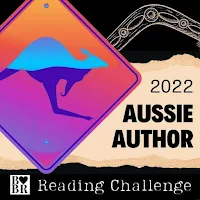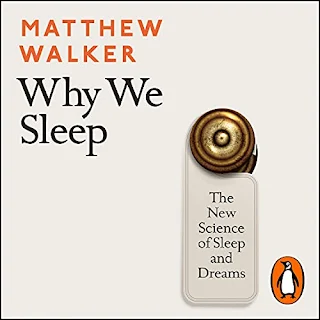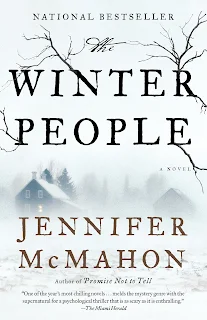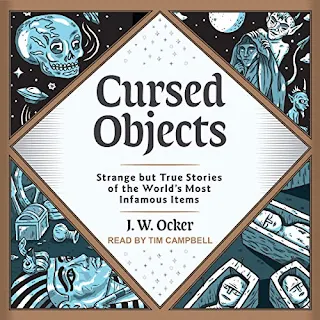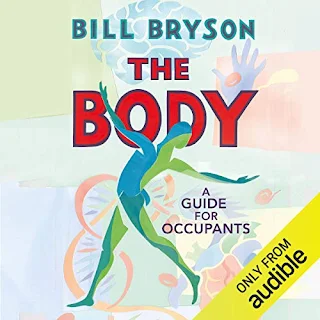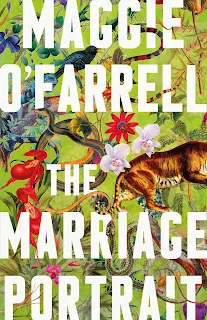It's time for another classic, and this time... it was
The Day of the Triffids by John Wyndham. Published 71 years ago in 1951,
The Day of the Triffids is a science fiction novel set in England and I'm pleased to say I was pleasantly surprised by how well it has aged.
The story begins in London with Bill, who is in hospital after having treatment on his eyes. His eyes are bandaged up and he isn't able to watch the incredible meteor shower that is lighting up skies around the world. The next day, everyone who watched the meteor shower is blind.
The action begins very early on, and there's certainly no slow burn build up:
"From the street below rose a scream, wildly distraught and contagiously terrifying. It came three times, and when it had died away it seemed still to tingle in the air." Page 4
We then accompany Bill as he works out what has happened and what he does from there. As the reader, we can't help but wonder what we would do in Bill's situation, and it's clear early on that the effects of the disaster are going to have irreparable repercussions for the human race, with the vast majority of the world now blind. Bill laments early on:
"My way of life, my plans, ambitions, every expectation I had had, they were all wiped out at a stroke along with the conditions that had formed them." Page 47
This story is largely known for the killer plants or triffids of the title. The triffids were present prior to the meteor shower, and didn't arrive in the way Audrey II did in
Little Shop of Horrors. I wasn't sure if these plants with their deadly stingers would seem comical to today's reader, but I can assure you they did not. At its heart, I believe
The Day of the Triffids is an apocalyptic novel, with the tension focussed around battling the elements and survival, the triffids are just one of the many dangers.
The population is instantly divided into the sighted and the blind, and a new class system is born. The sighted are needed to find food and basics for survival, and Bill faces many dilemmas early on. What is his duty as a sighted person? How many people should he help? As thoughts extend to survival in the future and people begin to form new communities and plan to plant crops and protect themselves from the triffids, people are forced to face harsh realities, prompting many deep and meaningful conversations with the characters.
The following quote is from a lengthy discussion around sexism, and the realisation that human knowledge is going to dwindle from generation to generation and every person is going to have to chip in now to retain as much as possible.
"Times have changed rather radically. You can't any longer say: "Oh dear, I don't understand this kind of thing," and leave it to someone else to do for you. Nobody is going to be muddle-headed enough to confuse ignorance with innocence now - it's too important. Nor is ignorance going to be cute or funny any more. It is going to be dangerous, very dangerous. Unless all of us get around as soon as we can to understanding a lot of things in which we had no previous interest, neither we nor those who depend on us are going to get through this lot." Page 150
The events in the book spark many conversations and force the reader to consider what they would do given the same situation. One group planned to create new laws while another focussed on ensuring all fertile women became pregnant so that they could give birth to sighted babies as soon as possible; to aid in the building of a new world.
With many accidents and deaths along the way resulting from an array of new dangers, many of the characters have lost all of their family and loved ones and find themselves alone in this 'new world.'
"Until then I had always thought of loneliness as something negative - an absence of company, and, of course, something temporary... That day I learned that it was much more. It was something which could press and oppress, could distort the ordinary, and play tricks with the mind. Something which lurked inimically all around, stretching the nerves and twanging them with alarms, never letting one forget that there was no one to help, no one to care. It showed one as an atom adrift in vastness, and it waited all the time its chance to frighten and frighten horribly - that was what loneliness was really trying to do; and that was what one must never let it do." Page 177
While reading
The Day of the Triffids, I couldn't help thinking about the TV series
See, starring Jason Momoa.
See is a brilliant tv show set in a post-apocalyptic world in the future where being blind is the norm. Two children are born who can see, and the story begins from there. Witnessing how the characters in this world have engineered their lives to cope with their communal blindness made me wonder if any of the writers have read
The Day of the Triffids.
I think it's a shame that this novel was adapted for the screen in the 1960s and became part of a period of terrible C Grade horror films. The same thing happened in the 1980s when several novels by Stephen King were turned into terrible boring movies that didn't do justice to the original source material.
While short in length, this Penguin clothbound edition (I love these!) has small font, so reading this classic slowed my reading progress significantly. I usually read around 6 books per month, but only read 4 in September as I was plodding through this classic. I don't read classics often, but the rewarding experience is always worth the additional time and effort.
The Day of the Triffids is a modern classic, and now I see why. (Sorry, couldn't resist). The events in the novel raise some serious questions, highlight terrible human behaviour while showcasing brave and good natured people just trying to help their fellow human beings to survive.
Important topics like law, power, subjugation, suicide and polygamy are faced and discussed by the characters, with plenty to engage the active mind of a student, or tempt discussion at a book club.
Highly recommended!



